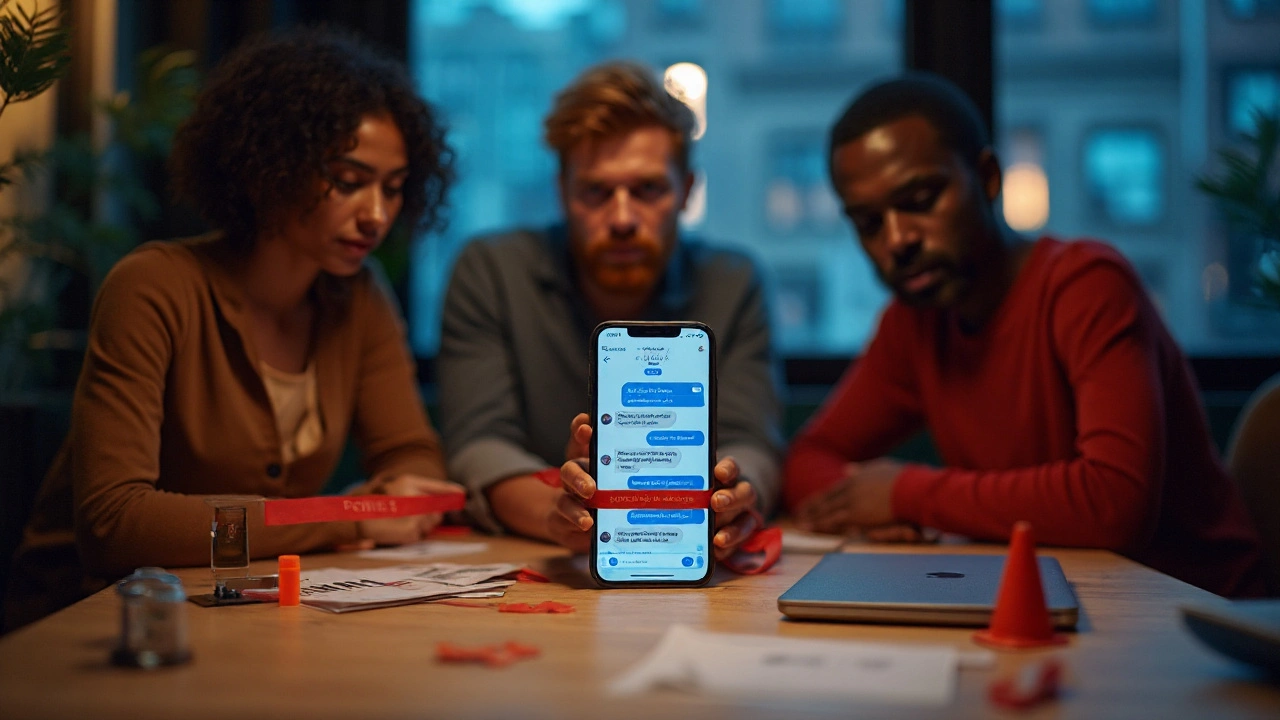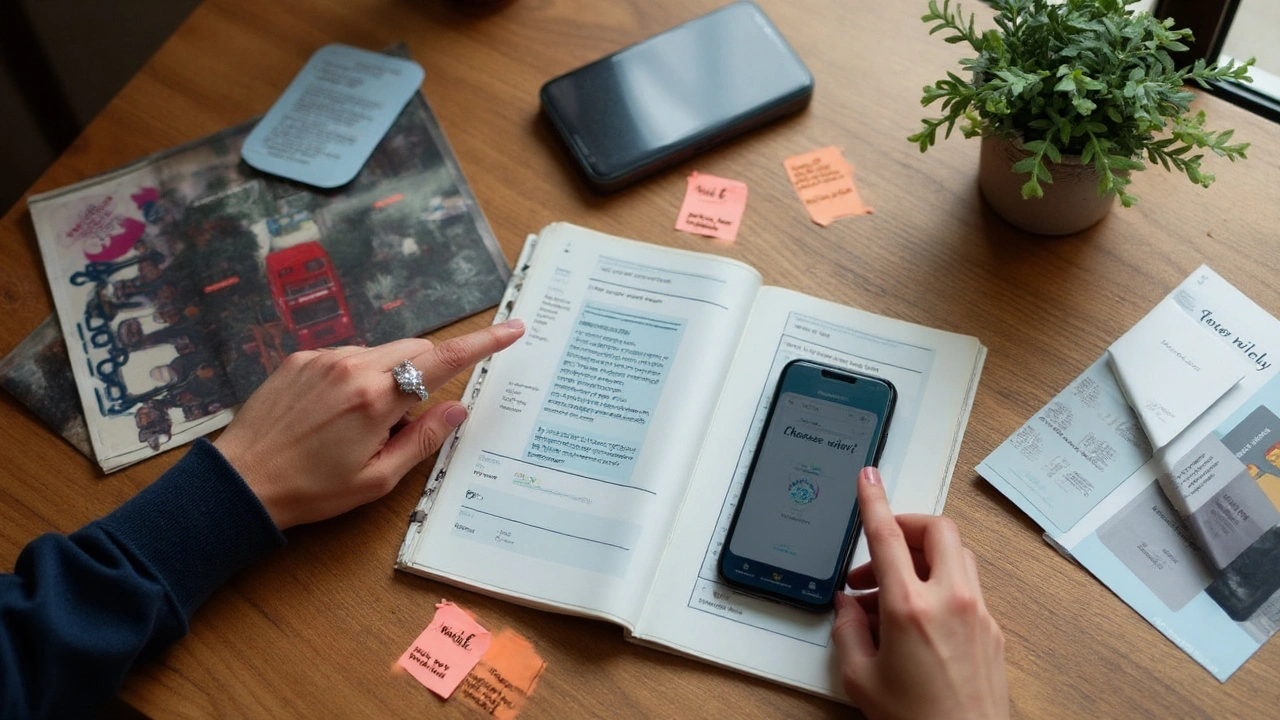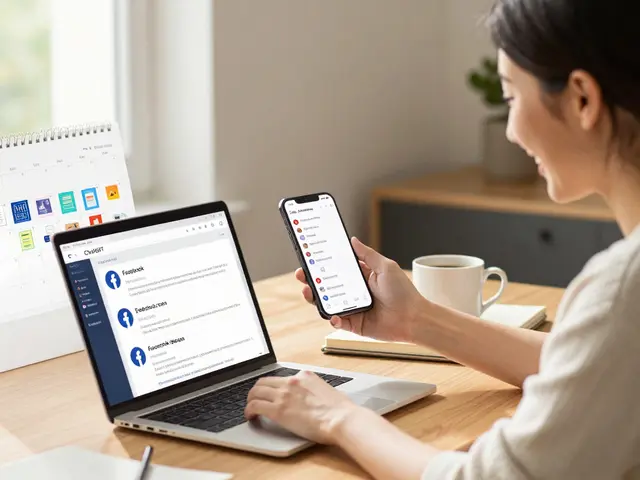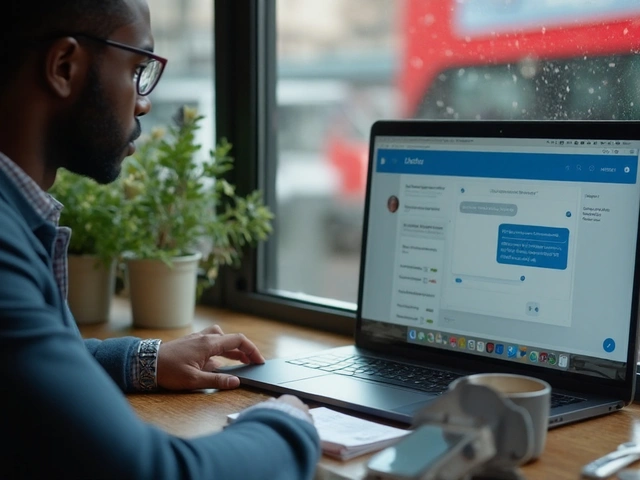Facebook still drives a mountain of customer messages. If you’re getting swamped in your Page inbox, the promise of AI replies and 24/7 coverage sounds like oxygen. This review cuts through the hype: what “ChatGPT for Facebook” actually is, what it costs in 2025, where it shines, where it breaks, and which alternatives might be smarter for your team.
- TL;DR: “ChatGPT for Facebook” isn’t a single product. It’s either a custom build with OpenAI’s API, a no-code bot platform that plugs into Meta, or you lean on Meta’s own AI.
- Best use cases: instant FAQs, lead capture via DMs, pre-sales triage, and comment-to-DM automations. Use human handoff for billing, complaints, and edge cases.
- Costs are mainly usage-based tokens + your platform subscription. Expect light usage to cost tens of dollars per month, heavy ecom support to hit hundreds.
- Meta’s 24-hour messaging policy still applies. Stay compliant with message tags or Sponsored Messages for re-engagement.
- Top picks: ManyChat for speed to value; Botpress or a custom build for control; Meta AI for simple, free-ish answers but less brand control.
Jobs to be done after you clicked this:
- Decide if ChatGPT for Facebook fits your use case or if another route is safer.
- Compare the main options and understand the trade-offs.
- Get a realistic picture of costs and latency.
- Learn the fastest way to set it up without breaking Meta’s rules.
- Pick an alternative if you’re in a regulated or high-risk space.
What “ChatGPT for Facebook” actually is in 2025 (and how to judge it)
There isn’t an official product called “ChatGPT for Facebook.” You’ve got three practical paths today:
- No-code/low-code platforms: ManyChat, Botpress Cloud, Heyday by Hootsuite, Intercom/Zendesk connectors. These plug into your Facebook Page inbox and Messenger, with optional OpenAI under the hood.
- Custom build: Your app connects to Meta’s Messenger Platform (via Graph API + Webhooks) and calls OpenAI’s API to generate responses. You add guardrails, knowledge retrieval, and human handoff.
- Meta AI: Meta’s native assistant can answer general questions and draft replies, but it doesn’t know your policies, stock, or tone unless you structure prompts carefully-and you get less control.
Before you commit, score your needs against five decision criteria:
1) Use case clarity
- Customer support: deflect FAQs, order lookups, tracking links, store hours. Needs API hooks and reliable handoff.
- Lead gen: comment-to-DM flows from Ads or Reels; qualify, capture email/phone, book calls. Needs templates, tags, CRM sync.
- Sales assist: product finder, bundles, cross-sell. Needs product catalog/RAG and guardrails for pricing and stock.
- Community replies: polite public comments, spam filters, “we’ll DM you.” Needs tone control and approvals.
2) Policy compliance (non-negotiable)
- Messenger’s “24-hour rule” still stands. You can respond freely within 24 hours of a user’s message. After that, use approved message tags (e.g., ACCOUNT_UPDATE, POST_PURCHASE_UPDATE, CONFIRMED_EVENT_UPDATE) or Sponsored Messages to re-engage. Source: Meta Messenger Platform Policy.
- Disclose you’re using AI and log consent for sensitive queries. Source: Office of the Australian Information Commissioner guidance on transparency and privacy notices.
- Store only what you need; keep training data separate from PII. Source: OpenAI API data usage policy.
3) Latency & reliability
- Target sub-2.5 seconds for simple answers, sub-5 seconds for retrieval or API lookups. Anything longer feels broken in chat.
- Set a 6-8 second timeout and fall back to a friendly template if the model stalls.
- Cache common answers. Preload store hours, return policy, shipping zones.
4) Cost realism (tokens + platform)
OpenAI charges per token. As a rule of thumb:
Monthly cost ≈ (Monthly messages × Avg tokens per message × Rate per token) + Platform subscription
Example (as listed on OpenAI’s pricing in 2024-2025, subject to change):
- GPT‑4o mini: around US$0.15 per 1M input tokens and US$0.60 per 1M output tokens.
- GPT‑4o: around US$5 per 1M input tokens and US$15 per 1M output tokens.
If an average Q&A consumes ~500 input + 200 output tokens (700 total), 10,000 monthly chats on GPT‑4o mini land in the low tens of dollars for usage; GPT‑4o would be much higher. Convert to AUD as needed.
5) Team & maintenance
- No-code gets you live fastest but limits deep control.
- Custom builds unlock brand tone, retrieval, and tools, but you’ll maintain servers, prompts, and analytics.
- Hybrid (platform + custom API steps) is often the sweet spot for growing brands.

Comparisons, trade-offs, and credible alternatives
Here’s a snapshot of the main ways to run Facebook AI messaging in 2025.
| Option | Pricing model | Strengths | Weaknesses | Best for |
|---|---|---|---|---|
| ManyChat + OpenAI | Subscription tiers + OpenAI usage | Fast setup, Comment-to-DM, templates, growth widgets | Less control over deep logic; advanced RAG needs workarounds | SMBs, creators, lead gen |
| Botpress Cloud + OpenAI | Subscription + usage | Visual flows, knowledge bases, tool calling, analytics | More complex; learning curve | Scaling teams needing control |
| Custom build (Graph API + OpenAI) | Infra + OpenAI usage | Full control, brand tone, private data, custom tools | Dev time, maintenance, monitoring required | Mid-market & enterprise, regulated sectors |
| Meta AI assistant | Included; platform-dependent | Zero dev, quick answers, native | Limited brand control, unknown roadmap fit, data boundaries | Very small teams, simple FAQs |
| Intercom/Zendesk + FB integration | Seat-based + AI add-ons | Omnichannel inbox, SLAs, help center integration | Higher cost; setup time | Support teams with ticketing needs |
Best for / Not for
- ManyChat: Best for speed-to-value on Pages and Ads flows. Not for strict data privacy or deep product lookup without extra work.
- Botpress: Best for a single brain across channels (FB, WhatsApp, web). Not for teams unwilling to handle a learning curve.
- Custom: Best for policy-heavy brands, private catalogs, and complex tools (order edits, returns). Not for teams without dev/ops capacity.
- Meta AI: Best when you need “good enough” answers quickly. Not for strong brand voice, guarantees, or analytics.
Real-world scenarios
- Local café or gym (Perth or anywhere): ManyChat with menu hours, bookings link, and “Comment ‘MENU’” to DM the latest specials. Human handoff for dietary or billing questions.
- Ecommerce brand: Botpress or custom build with product retrieval (from your CMS/DB), order lookup via Shopify or custom API, and returns policy guardrails.
- B2B SaaS: Lead gen via Ads comment-to-DM, qualify with 3-5 questions, push to HubSpot or Salesforce, then book meetings via Calendly.
- Regulated (finance/health): Custom build with strict prompts (“no advice”), logging, and manual review queue. Keep the bot as an assistant, not an advisor.
Key trade-offs
- Speed vs accuracy: Smaller models are cheaper/faster but make more mistakes. Use function calling and retrieval for critical answers.
- Control vs convenience: No-code gets you live fast; custom gives you tone, context, and safe fail modes.
- Privacy vs personalization: The more you know about a user, the more helpful you can be-just make sure you have explicit consent and a clear privacy notice.
Credible alternatives worth considering
- Meta AI + saved replies: Free, simple, native. Use for basic FAQs, then graduate when you need control.
- Heyday by Hootsuite: Retail-focused AI with Facebook and Instagram integrations, and handoffs to human agents.
- Intercom Fin or Zendesk AI: Strong for teams that already run support/ticketing, with Facebook as one channel among many.
- Claude or Gemini via platforms: Some bot builders let you swap the underlying model. Handy for tone or cost testing.

Setup paths, playbooks, checklists, FAQs, and next steps
Pick your path based on speed vs control. Here are three ways to get live without drama.
Path A - No-code quick start (ManyChat)
- Connect your Facebook Page to ManyChat. Authorize required permissions.
- Enable AI responses: choose a model (start with GPT‑4o mini) and set a tone guideline (friendly, brief, brand-safe).
- Import FAQs: store hours, shipping policy, returns. Keep answers short, link to your site for details.
- Build growth: create a Comment-to-DM rule for your latest post (“Comment ‘DEAL’ to get 10% code”).
- Human handoff: route “billing”, “refund”, “complaint”, or any sentiment below a confidence score to a human.
- Compliance: add a short AI disclosure in the first message (“I’m our virtual assistant. I can help with quick questions.”). Configure message tags for post‑purchase updates.
- Measure: track deflection rate (issues solved without human), median response time, and opt‑in/opt‑out rates.
Path B - Hybrid builder (Botpress Cloud)
- Create a bot, connect Facebook channel, and plug in OpenAI with your API key.
- Add a Knowledge Base: upload your policy docs and top 50 FAQs. Set a strict retrieval threshold to reduce hallucinations.
- Define tools: order status (calls your commerce API), store locator, and booking links. Use function calling safely with timeouts.
- Design flows: greeting → intent detect → tool or retrieval → summarize → ask “Did that solve it?”
- Fallbacks: if confidence < 0.55 or latency > 6s, send a human-friendly template and escalate.
- Logs & alerts: send failed tool calls and sensitive topics (payments, medical, legal) to a human queue.
Path C - Custom build (Graph API + OpenAI)
- Meta setup: create an app in Meta for Developers, subscribe to Page Webhooks, and configure a secure webhook endpoint. Use system users and long‑lived tokens for Pages access. Follow Meta’s review steps.
- OpenAI integration: choose a model (start with GPT‑4o mini for cost/latency). Add a system prompt with brand rules and “don’t guess” instructions.
- Retrieval: index your help center with embeddings. Use retrieval‑augmented generation (RAG) and cite sources in answers.
- Tools: implement functions for order lookup, booking, or ticket creation. Validate inputs and sanitize outputs.
- Safety: classify messages first (intent + risk). If risky, offer a human handoff. Log all tool calls and failures.
- Observability: capture latency, token usage, and containment rate. A/B test prompts and temperature for tone and precision.
Playbooks that actually move the needle
- Comment-to-DM coupon: users comment “CODE” on your promo post; bot DMs a unique coupon, then asks one qualifying question. Tag the lead in your CRM.
- Order status self‑serve: user types “Where’s my order?” → bot asks for email/order ID → tool call returns tracking link + estimated delivery window.
- Returns triage: bot checks order age and item type, then gives the right policy link and creates a ticket if needed.
- After-hours coverage: from 6pm-8am, keep answers strict and brief; escalate anything complex to a morning queue.
Checklists
Policy & risk:
- Add an AI disclosure in first contact and your Page’s About section.
- Respect the 24‑hour rule and approved tags. Use Sponsored Messages for re‑engagement outside the window.
- Never ask for full card numbers or passwords in chat. Redirect to a secure page.
Prompt & retrieval hygiene:
- System prompt: tone, brand do’s/don’ts, when to hand off, and “cite sources.”
- Knowledge base: keep a tight set of versioned docs. Expire or re‑embed after major policy changes.
- Hallucination guard: if confidence is low, ask a clarifying question or say “I’m not sure” and escalate.
Measurement:
- Containment rate (solved without human) target: 35-60% for FAQs; lower for complex brands.
- Median first response < 2.5s; 95th percentile < 5s.
- Cost per resolved conversation: total AI + platform spend ÷ resolved chats.
Costs, simplified
- Model usage: pick GPT‑4o mini for bulk FAQ; upgrade to GPT‑4o for delicate or high‑value chats.
- Platform fees: ManyChat/Botpress tiers scale by contacts or messages; support suites charge per seat and add AI as an add‑on.
- Hidden costs: time to curate prompts, build flows, and review mistakes. Budget recurring hours monthly.
Mini‑FAQ
- Will Facebook penalize AI replies? No. There’s no penalty for AI as long as you follow Messenger policies and user consent norms.
- Can it post on my Page? Yes, via the Graph API or platform features, but keep AI on a short leash for public posts. Use drafts and approvals.
- Does it work in multiple languages? Yes. Detect language and respond in kind. Keep a fallback to English if detection fails.
- How do I stop hallucinations? Use retrieval with strict filters, set a low temperature, and instruct the model to decline when unsure.
- What about ads? Use AI to draft variations and respond to comments, but have a human approve ad copy for compliance.
Troubleshooting by persona
Solo owner (time-poor):
- Start with ManyChat’s basic AI and two flows: FAQ and Comment‑to‑DM coupon. Kill anything you can’t monitor.
- Weekly review: top missed intents, canned replies to add, and one tweak to the system prompt.
Ecommerce manager:
- Wire order status and returns tools first. Measure deflection on those two flows before adding more.
- Tag conversations by product line to see where customers get stuck; update KB docs accordingly.
Regulated brand lead:
- Use a custom build or enterprise platform with audit logs. Add a “never provide advice” rule and strict handoff.
- Run a pilot on limited intents (store hours, appointment bookings) before expanding.
When to choose an alternative
- You need full ticketing, SLAs, and reporting: pick Intercom or Zendesk with Facebook integration.
- Your budget is near zero and FAQs are simple: try Meta AI + saved replies.
- You want cross‑channel parity (FB, IG, WhatsApp, web): Botpress or a custom build keeps one brain across channels.
Next steps
- Write your system rules: tone, do’s/don’ts, handoff triggers, and the 10 FAQs you’ll support first.
- Pick a path (ManyChat, Botpress, or custom) and ship a pilot to 10-20% of traffic.
- Set guardrails: timeouts, fallbacks, and a clear disclosure. Train your human team on escalations.
- Measure weekly: latency, containment, cost per resolved chat, and CSAT. Improve one thing at a time.
- Only then expand to sales assists, lead qualification, and comment automations.
Credibility notes: Policies referenced from Meta’s Messenger Platform documentation (24‑hour rule, message tags). Pricing examples based on OpenAI’s public pricing ranges for GPT‑4o and GPT‑4o mini in 2024-2025. Privacy transparency guidance from the Office of the Australian Information Commissioner. Always confirm the latest terms before going live.




Write a comment